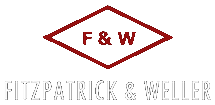Spotted Lanternfly from https://www.dec.ny.gov/animals/113303.html
What is the spotted lanternfly (SLF)?
SLF is an invasive pest from Asia that primarily feeds on tree of heaven (Ailanthus altissima) but can also feed on a wide variety of plants such as grapevine, hops, maple, walnut, fruit trees and others. This insect could impact New York's forests as well as the agricultural and tourism industries.
Identification
Nymphs are black with white spots and turn red before transitioning into adults. They can be seen as early as April. Adults begin to appear in July and are approximately 1 inch long and ½ inch wide at rest, with eye-catching wings. Their forewings are grayish with black spots. The lower portions of their hindwings are red with black spots and the upper portions are dark with a white stripe. In the fall, adults lay 1-inch-long egg masses on nearly anything from tree trunks and rocks to vehicles and firewood. They are smooth and brownish-gray with a shiny, waxy coating when first laid.
Where are they located?
SLF were first discovered in Pennsylvania in 2014 and have since been found in New Jersey, Delaware and Virginia. In New York, a dead insect was found in Delaware County in the fall of 2017. In 2018, insects were reported in Albany, Monroe, Yates and Suffolk counties. Following the reports, DEC and Department of Agriculture and Markets (DAM) staff immediately began extensive surveys throughout the area. At this time, no additional insects have been found.
What is the risk to NYS?
SLF pose a significant threat to New York's agricultural and forest health. Adults and nymphs use their sucking mouthparts to feed on the sap of more than 70 plant species. This feeding by sometimes thousands of SLF stresses plants, making them vulnerable to disease and attacks from other insects. SLF also excrete large amounts of sticky "honeydew," which attracts sooty molds that interfere with plant photosynthesis, negatively affecting the growth and fruit yield of plants. New York's annual yield of apples and grapes, with a combined value of $358.4 million, could be impacted if SLF enters New York. The full extent of economic damage this insect could cause is unknown at this time.
Although native insects also secrete honeydew, the size of SLF and the large populations that congregate in an area result in large accumulations of it. The sticky mess and the swarms of insects it attracts can significantly hinder outdoor activities. In Pennsylvania, where SLF populations are the densest, people can't be outside without getting honeydew on their hair, clothes, and other belongings.
How do they spread to new areas?
SLF can jump and fly short distances, they spread primarily through human activity. They often hitch rides to new areas when they lay their eggs on vehicles, firewood, outdoor furniture, stone, etc. and are inadvertently transported to new areas.
What are the signs of an infestation?
- Sap oozing or weeping from tiny open wounds on tree trunks, which appears wet and may give off fermented odors.
- One-inch-long egg masses that are brownish-gray, waxy and mud-like when new. Old egg masses are brown and scaly.
- Massive honeydew build-up under plants, sometimes with black sooty mold.
What is being done?
DEC is working with DAM and the US Department of Agriculture (USDA) to address SLF. Since it is less expensive and easier to deal with a pest before it becomes widespread, the goal is to find SLF early or prevent it from entering NY altogether.
A plan has been developed that describes how the agencies will prevent and detect SLF in New York. Extensive trapping surveys will be conducted in high-risk areas throughout the state as well as inspections of nursery stock, stone shipments, commercial transports, etc. from Pennsylvania. DEC and partner organizations encourage everyone to be on the lookout for this pest.
Exterior Quarantine
To slow the spread of SLF, DAM issued a quarantine that restricts the movement of goods brought into New York from quarantined areas in Delaware, New Jersey, Pennsylvania and Virginia. The quarantine requires regulated articles, such as packing materials, landscaping and construction equipment, and nursery stock to have certificates of inspection issued from the impacted states. Inspections are being conducted across New York by DAM and its partners to check for SLF and compliance with the regulations. For more information and for a list of regulated articles, see please visit DAM's website (leaves DEC website).
Protective Zones
In an effort to detect SLF early and respond in a timely manner, DEC has established a Protective Zone encompassing 20 counties located near the PA and NJ infestations. Protective Zones allow DEC and its partners to conduct activities such as surveying, monitoring, and management to find and prevent the spread of SLF. Protective Zones are established in the following counties: Bronx, Broome, Chemung, Chenango, Delaware, Dutchess, Greene, Kings, Nassau, Orange, Otsego, Putnam, Queens, Richmond, Rockland, Suffolk, Sullivan, Tioga, Ulster and Westchester.
What can I do?
- Learn how to identify SLF.
- Inspect outdoor items such as firewood, vehicles, and furniture for egg masses.
- If you visit states with SLF, be sure to check all equipment and gear before leaving. Scrape off any egg masses. Visit the Pennsylvania Department of Agriculture webpage (leaves DEC website) for more information on SLF in PA.
If you believe you've found spotted lanternfly in New York...
- Take pictures of the insect, egg masses and/or infestation signs as described above (include something for scale such as a coin or ruler) and email to spottedlanternfly@dec.ny.gov OR fill out a reporting form (leaves DEC website).
- Note the location (address, intersecting roads, landmarks or GPS coordinates.)
- Report the infestation to iMapInvasives (leaves DEC website.)
Resources:
- SLF fact sheet (PDF, 450 KB)
- USDA APHIS (leaves DEC website)
- Pennsylvania Department of Agriculture (leaves DEC website)




